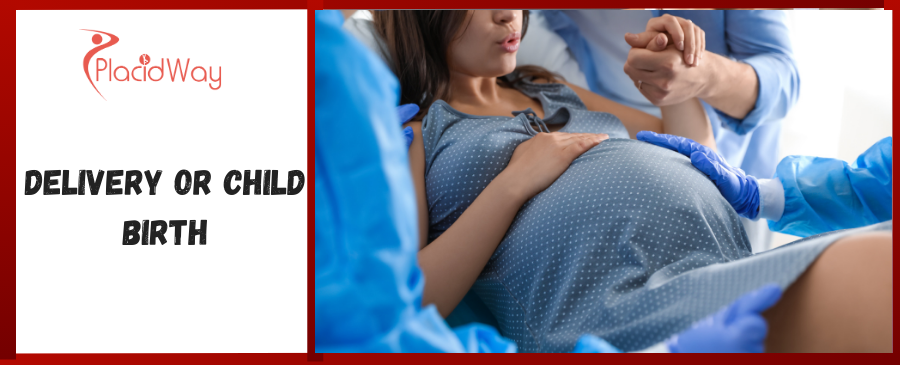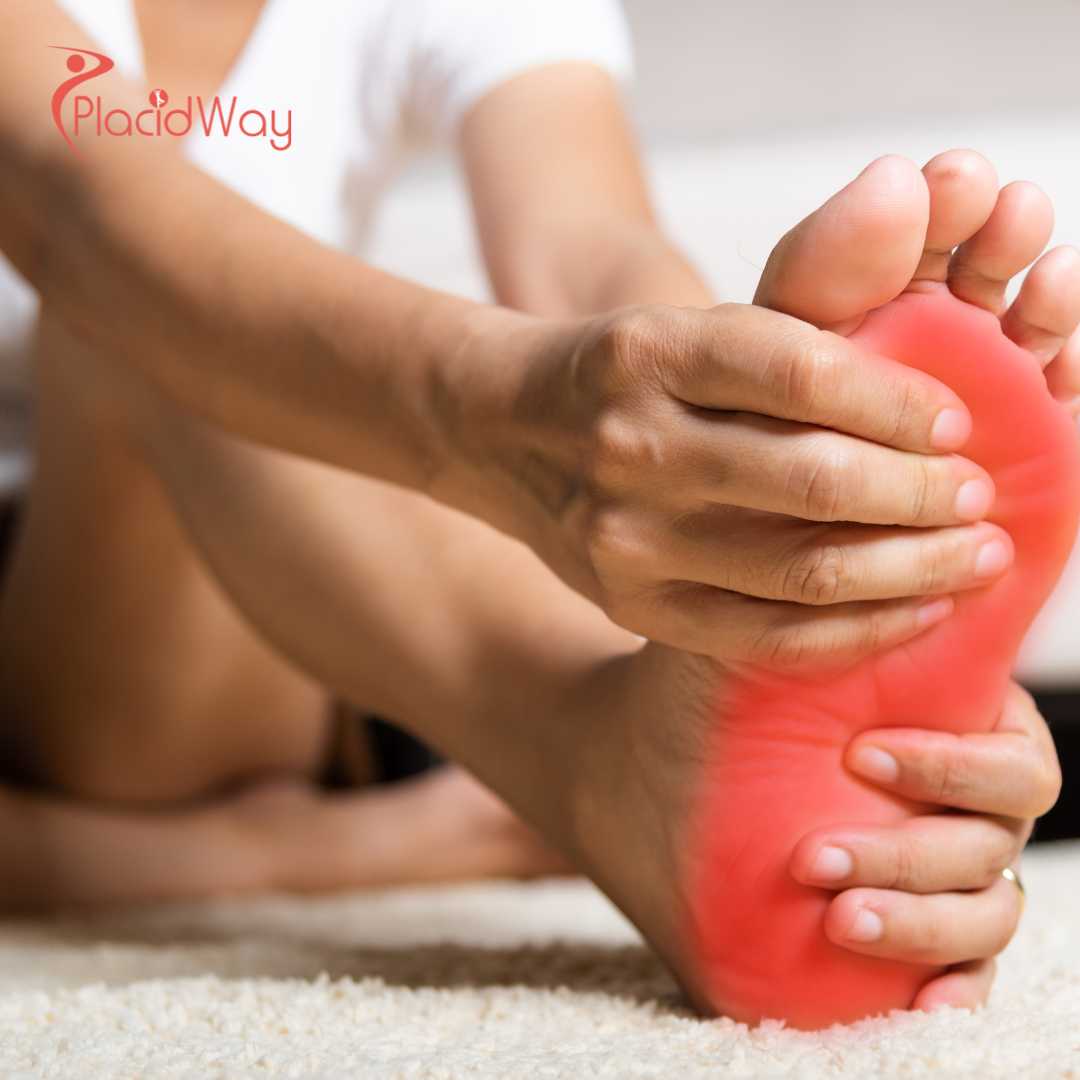
Welcoming Your Baby Abroad: Safe, Supported Childbirth Options Worldwide
Bringing a new life into the world is an incredibly profound and personal journey. For many expectant parents, the anticipation is filled with joy, planning, and sometimes, concerns about the quality and affordability of care. While traditionally childbirth happens close to home, a growing number of families are now exploring the option of childbirth abroad, seeking excellent medical care, state-of-the-art facilities, and often, significant cost savings.
This comprehensive guide is designed for parents considering delivery overseas or exploring medical tourism for birth. We understand you want the best for your baby and yourself. We'll delve into everything you need to know, from understanding the universal signs of labor and different types of delivery to navigating the complexities of international travel while pregnant and ensuring a safe, high-quality birthing experience in a foreign country. Whether you're looking for an affordable childbirth abroad solution or a specific birthing philosophy, we're here to help you make an informed decision for this monumental moment in your life.
The decision to pursue international birth options often stems from various motivations: seeking world-class maternity hospitals, accessing specialized birthing techniques not available locally, or simply finding a more cost-effective solution without compromising on safety or quality. Whatever your reason, understanding the process, potential challenges, and immense benefits is key to a smooth and joyous journey.
What Are the Common Signs and Stages of Labor to Expect?
Recognizing the signs of labor is crucial, especially when planning for childbirth abroad. While every pregnancy and labor is unique, there are common indicators that your baby is ready to arrive:
- Contractions: Unlike Braxton Hicks (practice contractions), true labor contractions become regular, stronger, and closer together, not easing with position changes.
- Water Breaking (Rupture of Membranes): This can be a gush or a slow trickle of amniotic fluid. Contact your doctor immediately if this happens.
- Bloody Show: A discharge of mucus tinged with blood, indicating the cervix is beginning to dilate and efface.
- Backache: A dull ache in your lower back that may not go away.
- Diarrhea or Nausea: Some women experience gastrointestinal upset as labor approaches.
Once labor begins, it generally unfolds in three primary stages:
- First Stage: This is the longest stage, starting with initial contractions and ending when your cervix is fully dilated (10 centimeters). It's divided into latent (early, mild contractions) and active (stronger, more frequent contractions) phases.
- Second Stage: The "pushing stage," where you actively work to push your baby through the birth canal. This stage ends with the birth of your baby.
- Third Stage: After your baby is born, you'll deliver the placenta. This usually happens within 5 to 30 minutes.
Understanding what to expect during delivery helps you prepare mentally and physically, regardless of your chosen birthing location.
What Factors Influence the Choice of a Childbirth Method?
When discussing types of childbirth with your medical team abroad, several factors come into play. Your healthcare provider will guide you based on your health, the baby's health, and the progress of labor.
- Vaginal Delivery: The most common method, often preferred when possible. It can be unmedicated (natural birth), or involve pain relief like an epidural. Factors favoring vaginal delivery include a healthy, full-term pregnancy, baby in a head-down position, and no maternal health contraindications.
- C-section (Cesarean Section): A surgical procedure where the baby is delivered through an incision in the abdomen and uterus. This can be:
- Elective: Planned in advance due to certain medical conditions (e.g., placenta previa, baby in breech position, previous C-section).
- Emergency: Performed if complications arise during labor that put the mother or baby at risk (e.g., fetal distress, failure to progress).
- Induced Labor: When labor is started artificially using medication or other methods, often for medical reasons like post-term pregnancy, preeclampsia, or ruptured membranes without contractions.
- Water Birth: A form of natural birth where part or all of labor and delivery occurs in a warm water pool, often used for pain management and relaxation. Not all facilities offer this.
Your doctor will discuss the pros and cons of vaginal delivery vs. C-section and other natural birth options with you, helping you make the best decision for a safe outcome.
Am I an Ideal Candidate for Childbirth Abroad?
Deciding who can give birth abroad involves assessing your health, your pregnancy's status, and your readiness for international travel. Generally, the best candidates for medical tourism pregnancy requirements are those with:
- Healthy, Low-Risk Pregnancy: Women with uncomplicated pregnancies are typically the safest candidates. If you have a high-risk pregnancy (e.g., gestational diabetes requiring intensive management, severe preeclampsia, placenta previa), extensive consultation with medical professionals both at home and abroad is vital, and travel may be discouraged.
- Stable Medical Conditions: Any pre-existing medical conditions should be well-managed and not prone to sudden complications that would require immediate, specialized care.
- Between 28-32 Weeks for Travel: Most airlines have restrictions on traveling while pregnant, typically not allowing travel after 36 weeks (or 32-34 weeks for international travel). Planning to arrive well before your due date is crucial.
- Financial Preparedness: While often more affordable, you must have funds for medical procedures, accommodation, travel, and unexpected expenses.
- Support System: Having a partner or support person accompany you is highly recommended.
- Flexibility and Patience: Navigating a foreign healthcare system and culture requires adaptability.
It's crucial to consult with your obstetrician before making any travel plans to ensure it's safe to travel pregnant and that your chosen destination can meet your specific medical needs.
What Does Recovery After Childbirth Typically Involve?
The postpartum recovery period is a critical time for both mother and baby, often lasting 6-8 weeks, though some aspects can extend longer. The specific recovery experience depends largely on the type of delivery:
- After Natural Birth (Vaginal Delivery):
- Perineal Soreness: You may experience pain, swelling, or tearing in the perineum. Ice packs, pain medication, and sitz baths can help.
- Vaginal Bleeding (Lochia): Heavy bleeding similar to a period will occur for several weeks, gradually lightening.
- Uterine Contractions: Your uterus will contract back to its pre-pregnancy size, which can cause cramping, especially during breastfeeding.
- Fatigue: Childbirth is physically exhausting, combined with sleep deprivation from a newborn. Rest is paramount.
- C-section Recovery Time:
- Incision Care: Your abdominal incision will require careful cleaning and monitoring for signs of infection. Pain at the site is common.
- Restricted Movement: Avoid heavy lifting and strenuous activity for several weeks. Walking gently is encouraged.
- Longer Hospital Stay: C-section recovery often requires a longer hospital stay (3-4 days) compared to vaginal births (1-2 days).
- Gas Pain: A common and often uncomfortable side effect.
Regardless of delivery type, emotional well-being is vital. Hormonal shifts can contribute to the "baby blues" or, in some cases, postpartum depression. It’s important to have a support system and communicate with your medical team. International facilities are typically well-equipped to manage both physical and emotional aspects of recovery.
What Are the Potential Risks and Complications of Childbirth?
While modern medicine has made childbirth safer than ever, it's essential to be aware of potential childbirth complications. Reputable hospitals abroad adhere to international safety standards to manage these risks effectively.
- Maternal Risks:
- Postpartum Hemorrhage: Excessive bleeding after delivery.
- Infection: Can occur in the uterus, bladder, or C-section incision.
- Preeclampsia/Eclampsia: High blood pressure and organ damage that can develop during pregnancy or postpartum.
- Perineal Tears or Episiotomy Complications: Pain, infection, or difficulty healing.
- Complications from Anesthesia: Rare but possible reactions.
- Fetal Risks:
- Fetal Distress: When the baby is not getting enough oxygen.
- Shoulder Dystocia: When the baby's shoulder gets stuck during delivery.
- Birth Injury: Though rare, injuries like nerve damage can occur.
Hospitals chosen for medical tourism for delivery prioritize safety. They have protocols for monitoring mother and baby, accessing emergency interventions, and managing any unforeseen events, making is childbirth dangerous a question largely addressed by quality medical infrastructure.
Why Consider Childbirth and Delivery Services Abroad?
Many expectant parents are discovering the numerous benefits of giving birth overseas. This decision is often driven by a combination of factors:
- Cost-Effectiveness: For many, especially those from countries with high healthcare costs (like the U.S.), affordable childbirth abroad is a primary motivator. The same high-quality care can be accessed for a fraction of the price.
- Access to High-Quality Care and Facilities: Many international hospitals boast state-of-the-art technology, modern infrastructure, and highly trained medical staff, often with international experience.
- Specialized Birthing Experiences: Some countries or clinics specialize in certain birthing philosophies, such as advanced pain management techniques, water birth, or gentle C-sections, which might not be readily available or covered in your home country.
- Privacy and Discretion: For some, the opportunity for a private and discreet birthing experience away from home is appealing.
- Extended Postpartum Stay: Depending on the destination, hospitals might offer longer, more inclusive postpartum stays, allowing for better recovery and support for new mothers.
- Tourism Opportunity: Combining childbirth with a longer stay in a new country can offer a unique cultural experience for the family.
Exploring medical tourism for pregnancy allows families to balance quality, cost, and personal preferences for one of life's most significant events.
Which Countries Offer the Best Value for Childbirth Abroad?
When searching for the best countries for medical tourism birth, several destinations consistently stand out for their combination of quality, affordability, and patient-centric care:
- Mexico: A top choice for North Americans due to proximity. Offers modern hospitals, often JCI-accredited, with bilingual staff. Costs are significantly lower than in the U.S.
- Costa Rica: Known for its beautiful environment and high-quality, government-regulated healthcare system. Offers a more holistic approach to birth in some facilities.
- Thailand: A global medical tourism hub, boasting numerous internationally accredited hospitals (JCI) with luxurious amenities and highly skilled medical professionals. Excellent for comprehensive maternity packages.
- India: Offers highly affordable options with world-class facilities, particularly in major cities. Many doctors are Western-trained, and English is widely spoken in hospitals.
- Turkey: With a rapidly growing healthcare sector, Turkey provides modern hospitals, experienced doctors, and competitive pricing, especially in Istanbul and Ankara.
- Colombia: Emerging as a strong contender, offering quality care, especially in cities like Bogota and Medellin, with advanced medical facilities and personalized attention.
These countries are frequently highlighted for providing cheap delivery abroad without compromising safety or quality, making them some of the safest places to give birth internationally for medical tourists.
What Should Expectant Parents Consider When Traveling for Childbirth?
Traveling while pregnant for birth requires meticulous planning to ensure a smooth and stress-free experience. Here's a checklist for planning birth abroad:
- Visas and Immigration: Research visa requirements for yourself, your partner, and how to obtain citizenship/passport for your newborn in the destination country and your home country. This is a critical aspect of international birth planning checklist.
- Travel Insurance: Standard travel insurance often excludes maternity care. Seek specialized maternity travel insurance that covers complications and the birth itself.
- Choosing Hospital and Doctor: Research facilities thoroughly. Look for JCI accreditation, read patient reviews, and communicate directly with the medical team. Ensure they offer the type of birth experience you desire.
- Accommodation: Plan for an extended stay, typically 4-8 weeks before your due date and a few weeks postpartum. Consider serviced apartments or long-term rentals.
- Language and Culture: Ensure there's a good communication plan (e.g., English-speaking staff, interpreter services). Be open to cultural differences in healthcare practices.
- Logistics: Proximity of accommodation to the hospital, transportation options, and access to necessities for newborns.
- Legal Documentation for Baby: Understand the process for birth registration, obtaining a birth certificate, and applying for your baby's passport(s) in both the birth country and your home country.
- Support System: Decide if a partner, family member, or doula will accompany you.
Careful preparation minimizes stress and allows you to focus on the arrival of your baby.
How Can You Ensure Safety and Quality for Childbirth Abroad?
Ensuring safe medical tourism for delivery is paramount. Don't compromise on quality for cost. Here's how to safeguard your experience:
- Accreditation: Look for international accreditations like the Joint Commission International (JCI). JCI accreditation signifies that a hospital meets rigorous international standards for patient safety and quality of care. Many facilities offering quality hospitals abroad for birth will prominently display this.
- Doctor Qualifications and Experience: Research your obstetrician's credentials, experience, and any specializations. Many international doctors are Western-trained.
- Facility Standards: Assess the hospital's infrastructure, technology, hygiene protocols, and emergency response capabilities. Virtual tours or detailed photos can help.
- Patient Reviews and Testimonials: Seek out feedback from previous international patients. Websites like PlacidWay can provide aggregated patient stories and ratings for international maternity care reviews.
- Clear Communication: Ensure the medical team can communicate effectively in a language you understand. Interpreters should be available if needed.
- Medical Tourism Facilitator: Working with a reputable company like PlacidWay can significantly streamline the process. They can help you identify accredited hospitals, arrange consultations, and handle logistics, providing an extra layer of reassurance.
- Transparency: Ensure all costs, procedures, and potential risks are clearly outlined before you commit.
How Much Does Childbirth Abroad Cost? (With Cost Comparison Table)
One of the most compelling reasons for affordable maternity care abroad is the potential for substantial savings. The cost of giving birth overseas can be significantly lower than in countries like the United States, Canada, or parts of Western Europe, even when factoring in travel and accommodation. However, prices vary based on:
- Country and City: Costs differ greatly between nations and even within different cities in the same country.
- Type of Delivery: Vaginal births are typically less expensive than C-sections, which involve more extensive surgical procedures and longer hospital stays.
- Hospital Tier: Private, luxury hospitals will be more expensive than public or standard private facilities.
- Included Services: Some packages include prenatal care, specific types of pain relief, or extended postpartum stays.
- Complications: Unexpected medical complications will increase the overall cost.
Here’s a general estimate for international delivery prices, for comparison:
| Country | Estimated Cost: Vaginal Delivery (USD) | Estimated Cost: C-Section (USD) |
|---|---|---|
| USA (without insurance) | $10,000 - $20,000+ | $15,000 - $30,000+ |
| UK (private, without NHS) | $7,000 - $12,000+ | $10,000 - $18,000+ |
| Mexico | $2,500 - $5,000 | $4,000 - $8,000 |
| India | $1,500 - $3,500 | $2,500 - $5,000 |
| Thailand | $3,000 - $6,000 | $5,000 - $10,000 |
| Costa Rica | $3,000 - $5,500 | $4,500 - $8,500 |
*These are estimated costs and can vary significantly based on the specific hospital, doctor, included services, and any complications. Always request a detailed quote.
While the initial appeal is often financial, the experience of having your baby abroad can be truly unique and enriching, providing access to care that aligns perfectly with your vision for childbirth.
Take the Next Step with PlacidWay
Ready to explore treatment options abroad? Discover top clinics, compare prices, and get a free quote tailored to your needs with PlacidWay.
Cheap Gyn Surgical Procedures Packages


-Package-in-Kuala-Lumpur,-Malaysia-by-FirstCell.jpg)







Share this listing